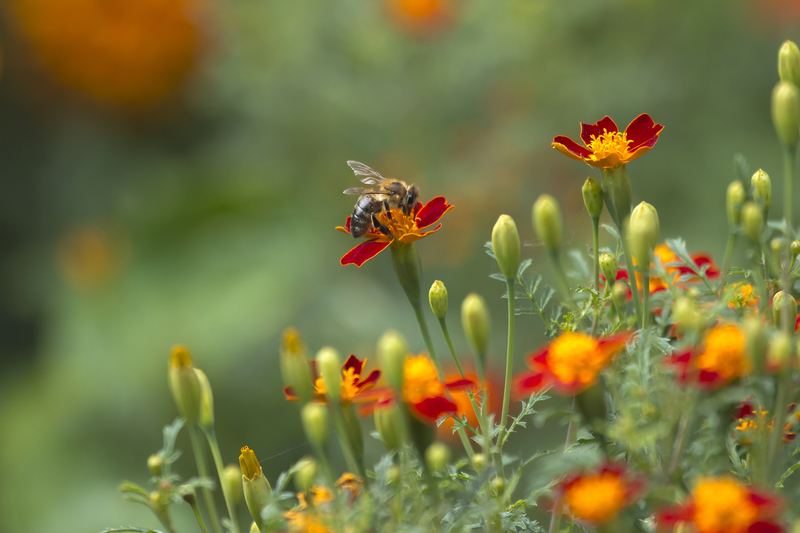How to Build a Fun and Safe Garden Environment for Kids
Posted on 19/09/2025
How to Build a Fun and Safe Garden Environment for Kids
Creating a fun and safe garden environment for kids is one of the best ways to spark their curiosity about nature while ensuring their playtime is both enjoyable and secure. If you're looking to design a child-friendly backyard or just want to make your outdoor space more engaging for youngsters, you've come to the right place. This comprehensive guide will walk you through every step for crafting a kid-friendly, interactive, and safe garden that will provide hours of entertainment while giving you peace of mind.
Why Creating a Kid-Friendly Garden Matters
A kid-safe garden environment is much more than just an outdoor play area--it's a place for children to learn, explore, and connect with the natural world. A well-designed garden fosters imagination, physical activity, and important life skills. It also encourages children to develop a lifelong appreciation for nature while providing parents with reassurance that their loved ones are playing in a secure space.
- Promotes sensory experiences through sights, smells, and textures
- Encourages outdoor physical activity and social interaction
- Teaches responsibility through gardening tasks
- Helps children develop observation and problem-solving skills
- Reduces screen time in favor of healthy, active play

Planning Your Safe and Entertaining Kids' Garden
1. Assess Your Space
Walk through your garden and evaluate the available area. Make note of:
- Sun and shade patterns throughout the day
- Existing plants and hardscape features (patios, sheds, etc.)
- Potential hazards such as uneven ground, ponds, or drop-offs
- Nearby streets or neighbors' yards requiring additional boundaries
The size and shape of your garden will influence what features you can include. Safety should always be your primary consideration when designing zones for kids.
2. Involve Your Kids in the Design Process
Children love to have a say in their environment. Encourage them to help plan their own play garden by asking for input on what activities and plants they enjoy. Letting children make some choices will not only spark excitement but also strengthen their sense of ownership and responsibility towards the garden.
3. Set Realistic Goals
Depending on your budget, time, and space, outline achievable priorities. Focus on core elements for a safe and stimulating garden for kids, such as:
- Safe surfaces for running, jumping, and crawling
- Age-appropriate play equipment
- Edible plants, sensory experiences, and wildlife-friendly zones
- Quiet corners for rest or reading
Safety First: Making Your Garden Secure for Children
1. Use Non-Toxic, Child-Safe Materials
- Choose wood, rubber, or soft mulch for play surfaces to cushion falls
- Avoid sharp-edged decking, exposed nails, or splintered fences
- Seal wooden structures to prevent decay and splinters
- Opt for non-toxic paints and stains
- Steer clear of treated timber that may leach harmful chemicals
2. Eliminate and Fence Off Hazards
- Remove or fence off ponds, water features, and deep troughs
- Cover compost bins securely
- Keep gardening tools and chemicals in locked sheds or out of reach
- Block off access to busy streets with secure, self-closing gates
- Regularly check for and repair broken equipment
3. Choose Safe Plants for Children
A safe garden for children means avoiding potentially toxic plants. Some common garden plants are poisonous if eaten or can cause skin irritation. Here's how to create a child-safe planting scheme:
- Research and avoid plants like oleander, foxglove, lily-of-the-valley, and angel's trumpet
- Select soft, non-thorny plants such as marigolds, sunflowers, pansies, and strawberries
- Include fragrant herbs like mint, basil, and chives (fun to touch and smell)
- Teach children never to taste any plant they find in the garden unless supervised
For a comprehensive list, consult your local extension service or poison control center.
4. Minimize Slips, Trips, and Falls
- Install non-slip paths and level stepping stones securely
- Keep pathways clear of clutter, exposed roots, and debris
- Use flexible edging rather than sharp metal or concrete
- Fill dips and holes in the lawn to stop children from tripping
Designing Fun Features for a Kid-Friendly Garden
1. Zones for Active Play
Install equipment suited for your child's age and interests. Always follow manufacturer guidelines and safety standards.
- Swings, slides, climbing frames, and balance beams
- Space for running and ball games (e.g., a small lawn or turf patch)
- Mini obstacle courses and stepping logs
- Chalkboard walls for creative drawing
Ensure all equipment is anchored and regularly inspected for safety. Keep play zones away from hard surfaces and fences.
2. Sensory Gardens for Exploration
A sensory garden for children is all about engaging the five senses--sight, smell, hearing, touch, and taste. This fosters learning and creativity.
- Brightly colored flowers and foliage (zinnias, nasturtiums, lamb's ear)
- Herbs and edible plants for tasting and smelling
- Tactile paths made from pebbles, sand, or bark chips
- Wind chimes, bamboo canes, or water features for soft background sounds
- Mud kitchens and water tables for hands-on play
3. Wildlife and Educational Elements
Introduce features that attract wildlife and spark curiosity. These create opportunities for learning and stewardship.
- Build bug hotels, bee houses, and butterfly gardens
- Install bird feeders and shallow bird baths
- Designate a corner for observing insects and frogs
- Offer magnifying glasses for exploring and collecting treasures
4. Creative Play and Relaxation Spaces
- Hideaway dens, teepees, or willow tunnels for imaginative games
- Log seats or blankets for reading and quiet time
- Outdoor chalkboards and art easels
Gardening Activities for Kids: Get Their Hands Dirty
1. Easy and Rewarding Plants to Grow
- Sunflower races (who can grow the tallest?)
- Radishes, salad greens, and beans for quick rewards
- Strawberries and cherry tomatoes for easy snacking
- Potatoes and carrots for harvesting treasure
- Pollinator-attracting plants like cosmos and lavender
Help children grow from seeds and care for their "own" patch in the garden to build responsibility and pride.
2. Fun Garden Projects and Seasonal Activities
Keep kids engaged through different times of the year with unique projects:
- Decorate plant pots with paints and stickers
- Build fairy gardens, dinosaur lands, or mini-ponds in tubs
- Create bird feeders from recycled materials
- Press flowers or make nature collages
- Organize bug hunts or scavenger hunts by color, shape, or type
Maintaining a Safe and Engaging Kid's Garden
1. Regular Inspections and Upkeep
- Check for splinters, loose bolts, and worn equipment regularly
- Prune back overgrown or hazardous branches
- Ensure secure gates and locked storage for chemicals/tools
- Refresh mulch, sand, or rubber matting as needed
2. Involve Children in Care and Learning
- Teach children how to water responsibly and identify plants
- Encourage them to help with weeding, sowing seeds, and deadheading flowers
- Discuss garden safety rules: no running with tools, hand washing after gardening, and not putting plants in their mouths
- Celebrate their successes--mark progress with photos and garden journals

Frequently Asked Questions about Fun and Safe Kids' Gardens
What are the best surfaces for children's play areas?
Use soft, impact-absorbing surfaces like wood mulch, sand, or specialized playground rubber. Avoid concrete, gravel, or bare soil, which can cause injuries or become muddy hazards.
How do I ensure poisonous plants aren't in the garden?
- Identify all existing plants with a reliable guide or local expert
- Replace any toxic plants in play areas with safe alternatives
- Regularly monitor for unfamiliar seedlings or mushrooms
At what age can children start helping in the garden?
Tiny toddlers can help with watering (with supervision), while preschoolers can sow seeds, harvest herbs, and dig. Older children can handle more advanced tasks such as planting, pruning, and learning to identify wildlife. Always supervise young gardeners!
Conclusion: Create Your Dream Child-Friendly Outdoor Space
A playful, creative, and safe garden for children doesn't have to be expensive or labor-intensive. With a little forward planning and the right choice of plants, play features, and practical safety measures, you can build a wonderland where kids thrive, explore, and grow.
By involving your children every step of the way--from inspiration to digging to maintenance--you spark a love of the outdoors that will last a lifetime. Whether you focus on sensory planting, wildlife habitats, or adventurous climbing equipment, the most memorable gardens are those filled with laughter, learning, and care.
Start small, think creatively, prioritize safety, and enjoy the journey of transforming your outdoor space into a magical haven for your kids. Happy gardening!

